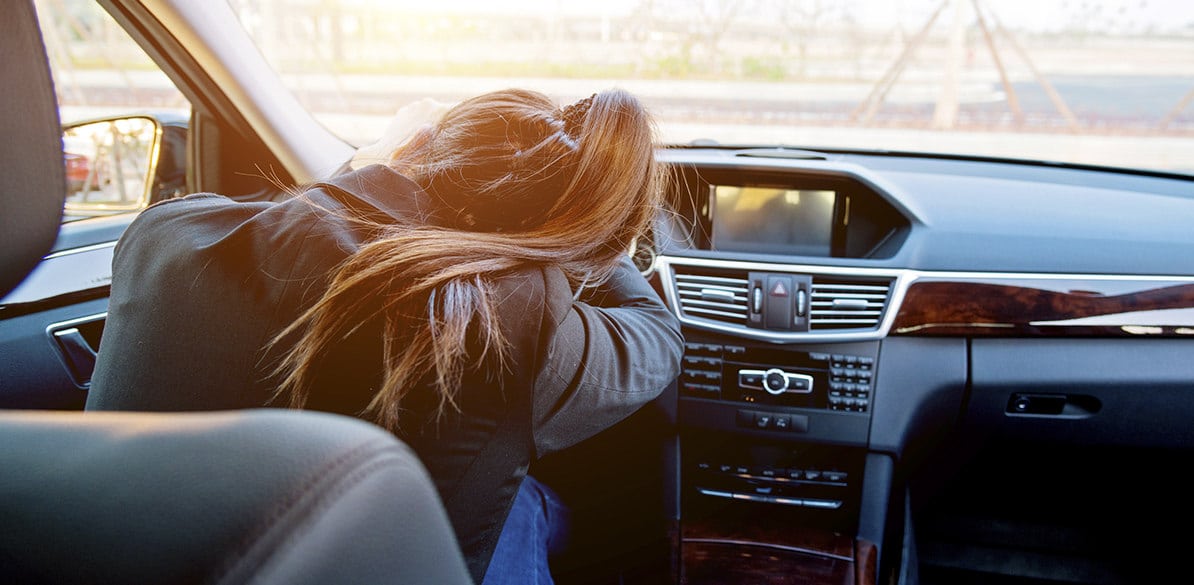Sleep, fatigue, narcolepsy, and its influence on driving

Narcolepsy
Narcolepsy is characterized by the appearance of sharp, unstoppable episodes of sleep that are enhanced with emotional situations, reported or not with excessive daytime drowsiness between sleepiness episodes.
It has been associated with a higher risk of traffic accident and drivers suffering this condition show worse results in the laboratory tests related to attention and vigilance.
Some companies are marketing electronic equipment that detects if the driver is sleepy, measuring the muscular tension performed on the car driving commands.
When muscles are relaxed by effect of the sleep, a light, acoustic signal turns on that makes the driver react.
Advice on Narcolepsy
- When people aware of their problem notice any drowsiness, they should park their car and sleep until the drowsiness has disappeared.
Advice on Fatigue
- The recommendations to be given to our patients are to rest for 20 minutes every two hours driving, or every 150 or 200 kilometers.
- Old people should rest every hour, or half and hour. When traveling with children, rest should be more frequent.
- While resting, it is advisable to walk for 10 or 15 minutes and, if symptoms of drowsiness have appeared, to have a snooze. They should also drink water and wash their face.
- Before starting a long journey, the driver and his companions must become aware that it will last several hours. They should not fix time or speed goals, because this forces them unconsciously to assume unnecessary risks.
- Professional drivers of long distances and those on long working days in the city should rest after 4 hours working, leaving an intermediate period without driving from 2 to 4 hours.
- In long journeys, 2 drivers shifting is essential, particularly at night.
We will help our patients to recognize when they are tired:
- If it is difficult for them to concentrate on the road and they make maneuvers almost unconsciously with a lower perception of the signals, lights, sounds, distances, and time.
- If they reduce the quantity, quality, or effectiveness when executing maneuvers and reactivity.
- If unpleasant personal states arise, including boredom, anxiety, instability, confusion, and greater acceptance of the risk
- If symptoms such as heavy sight and almost constant blinking, rubbing his face, headaches, tinnitus, feeling of numbness in arms and legs and need for moving in the car, with greater or smaller loss of attention.
Remedies to avoid sleep while driving include:
- Stop every 2 hours during trips.
- Air the car room and turn on the air conditioning.
- Do not take abundant meals, do not drink alcohol, do not take abuse drugs or medicines. Talk with the passengers in a relaxed manner, but without getting much involved in the conversation
- Avoid very relaxing music.
- If drowsiness appears, the best is to stop and sleep for a while.
Special attention should be paid to those making long travels over night: they should start them after resting adequately and always having someone awake nearby.
One out of three drivers has ever been alarmingly sleepy while driving. From 50 years of age, less sleep is required at night, but it is more difficult to control it at daytime.
The recommendations for an adequate sleep hygiene are to perform regular, moderate exercise, to establish sleep times without afternoon snaps, to avoid abundant dinners, coffee, smoking, to watch for light, temperature, and noise conditions of the room, and to avoid working or watching television in bed.
We should remind our patients that, if they are going to drive, they cannot drink alcohol, whether they are taking medicines or not.
Patients should not drive if they did not have an adequate night rest.
